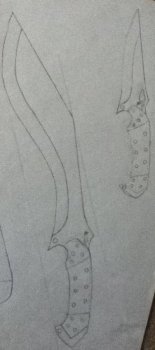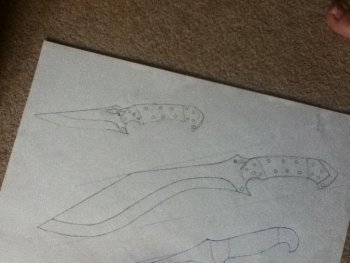You're looking a bit at opposing characteristics here so there is going to have to be a compromise. For balance you will have to decide if you want it to be balanced to be responsive in your hand, which may put less force in the blow from the blade, or to have it balanced for the chop, which will give it a blade presence and be less agile.
In the first case I would do a slight distal from handle to point, especially if you are not putting any furniture one the blade. In the second case I would do a distal taper from the sweet spot to the point and a proximal taper from the sweet spot to the handle. Steel selection will important too. I would go for one that has good toughness over strength and wear resistance, maybe 5160 or 9260. Maybe even 4140, though that's a little low in carbon, the molybdenum and increased ferrite, if you do a differential hardening, will add to the toughness. I'm sure that there are people more experienced with steel selection who could give more informed advice.
A convex grind would also put more strength behind the edge.
Doug



